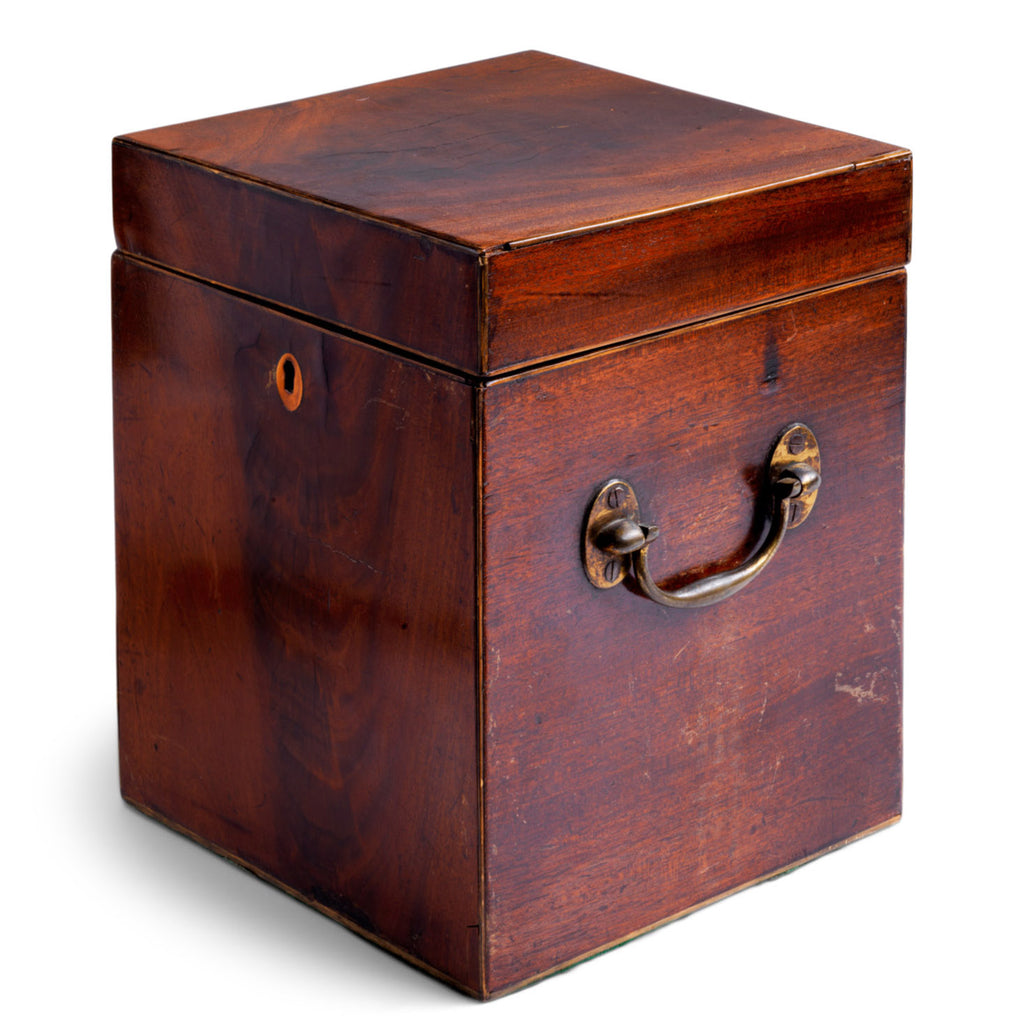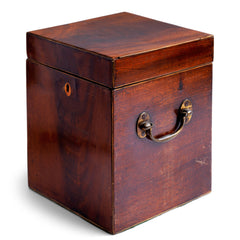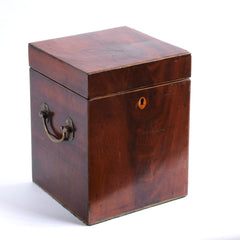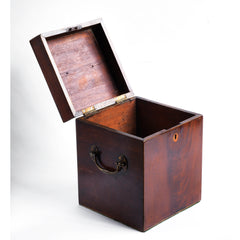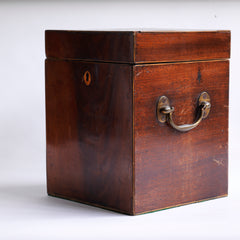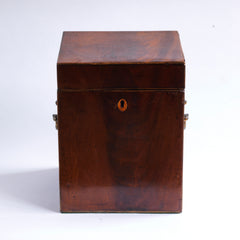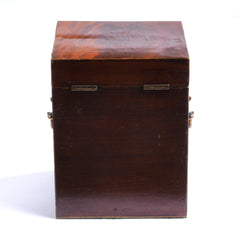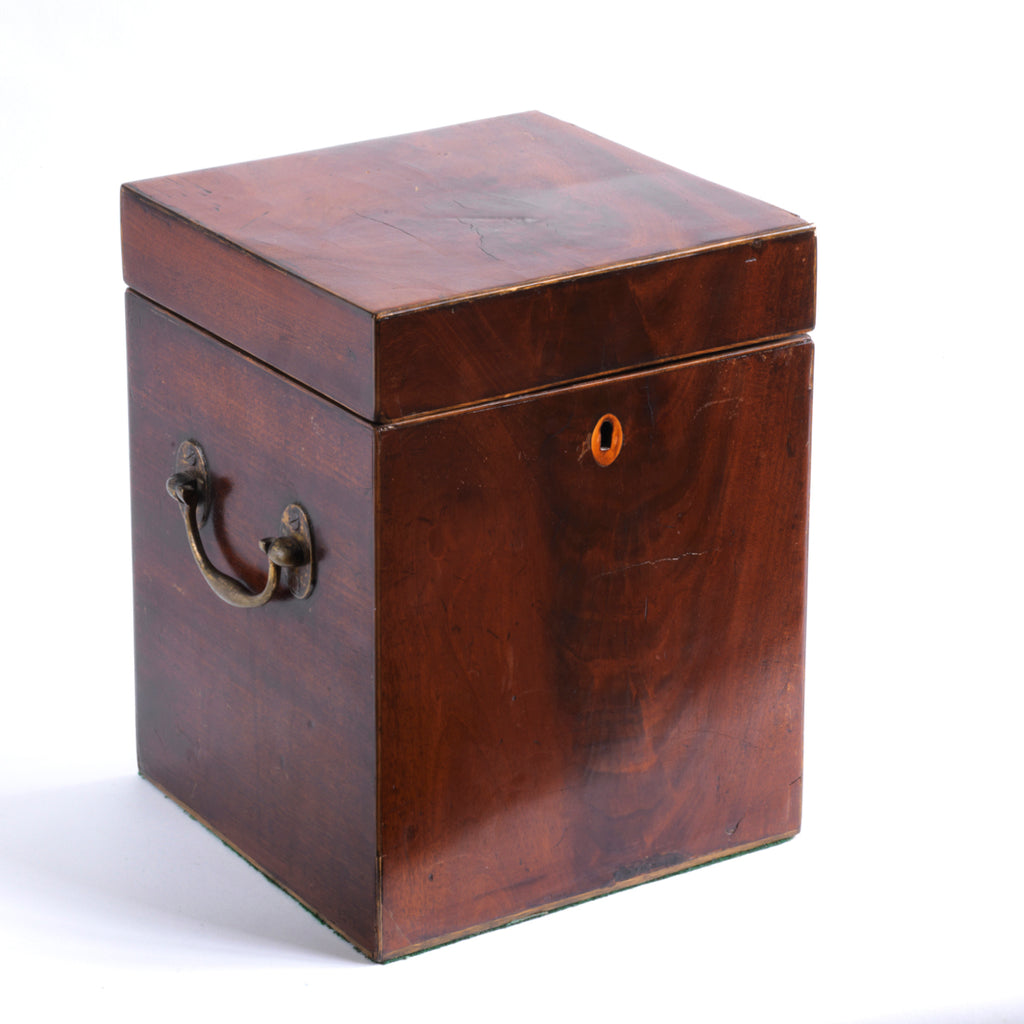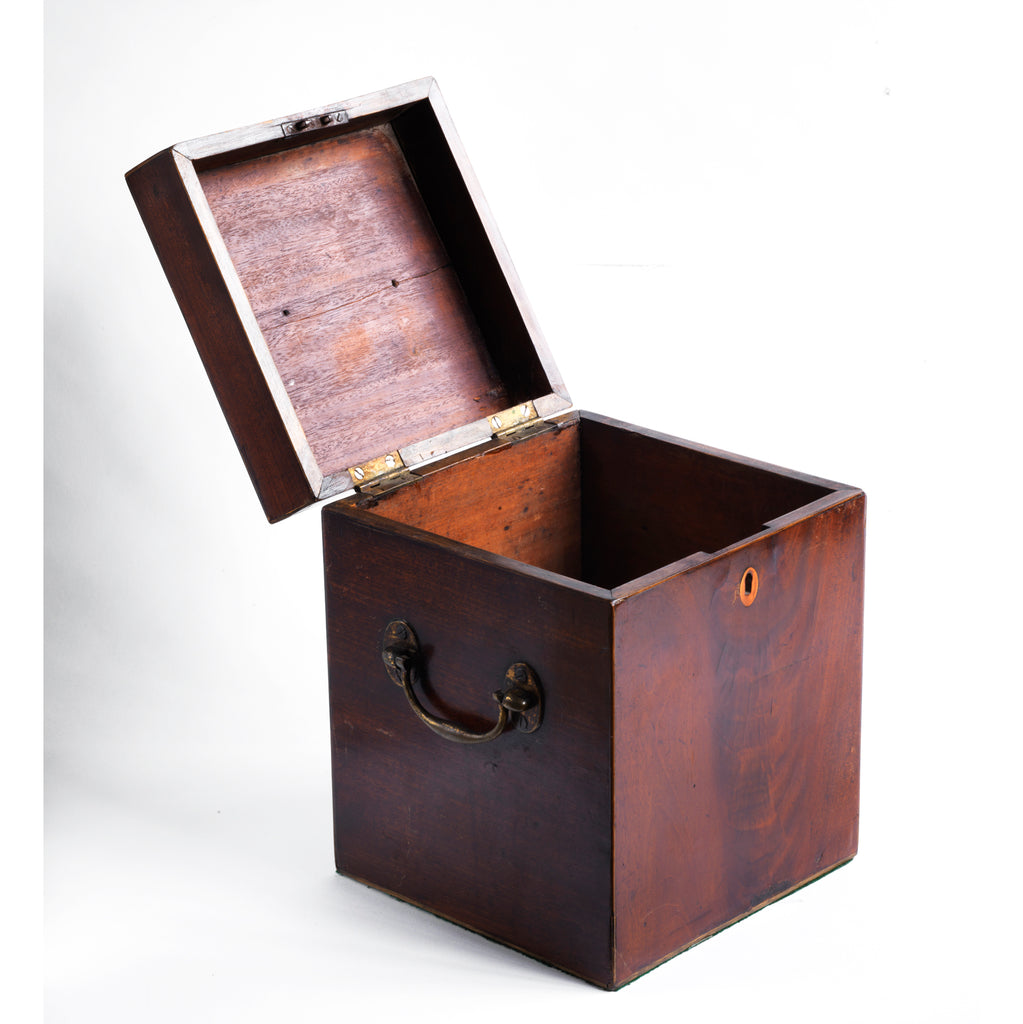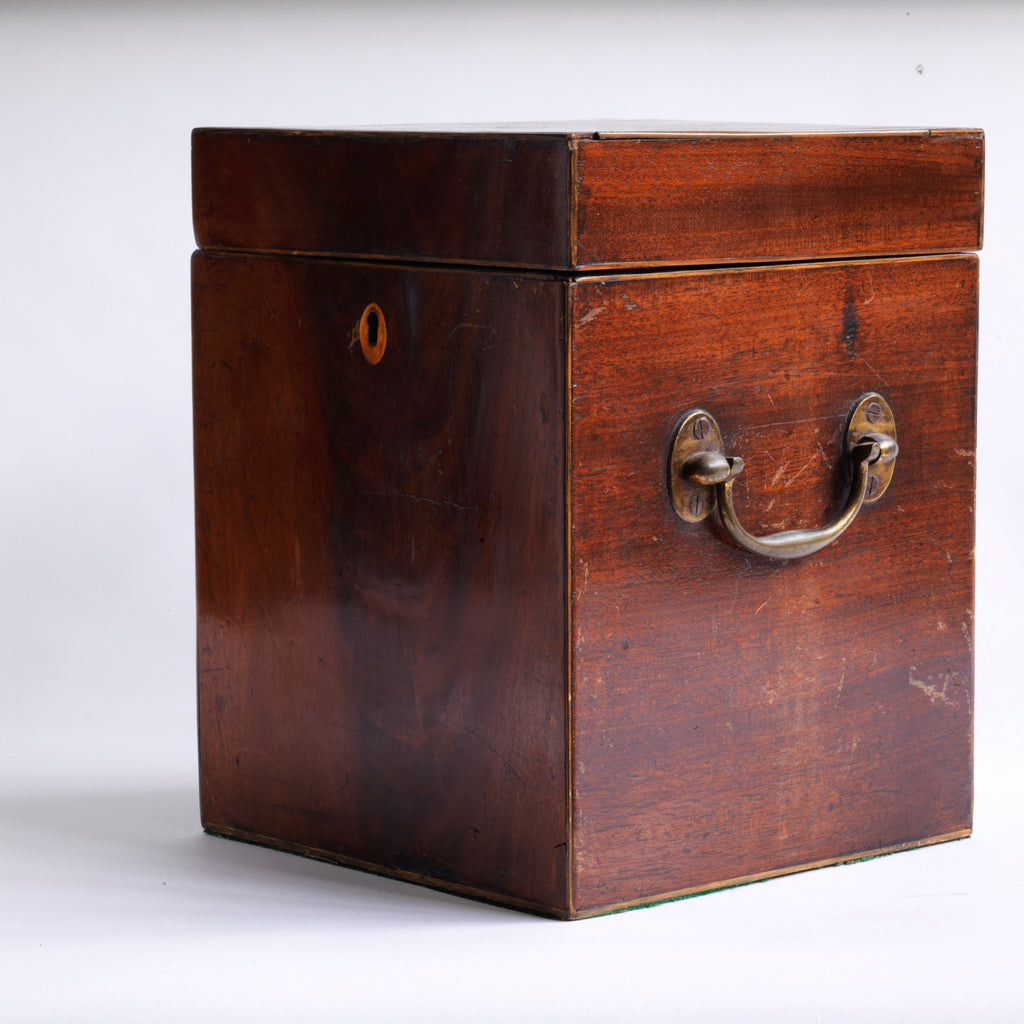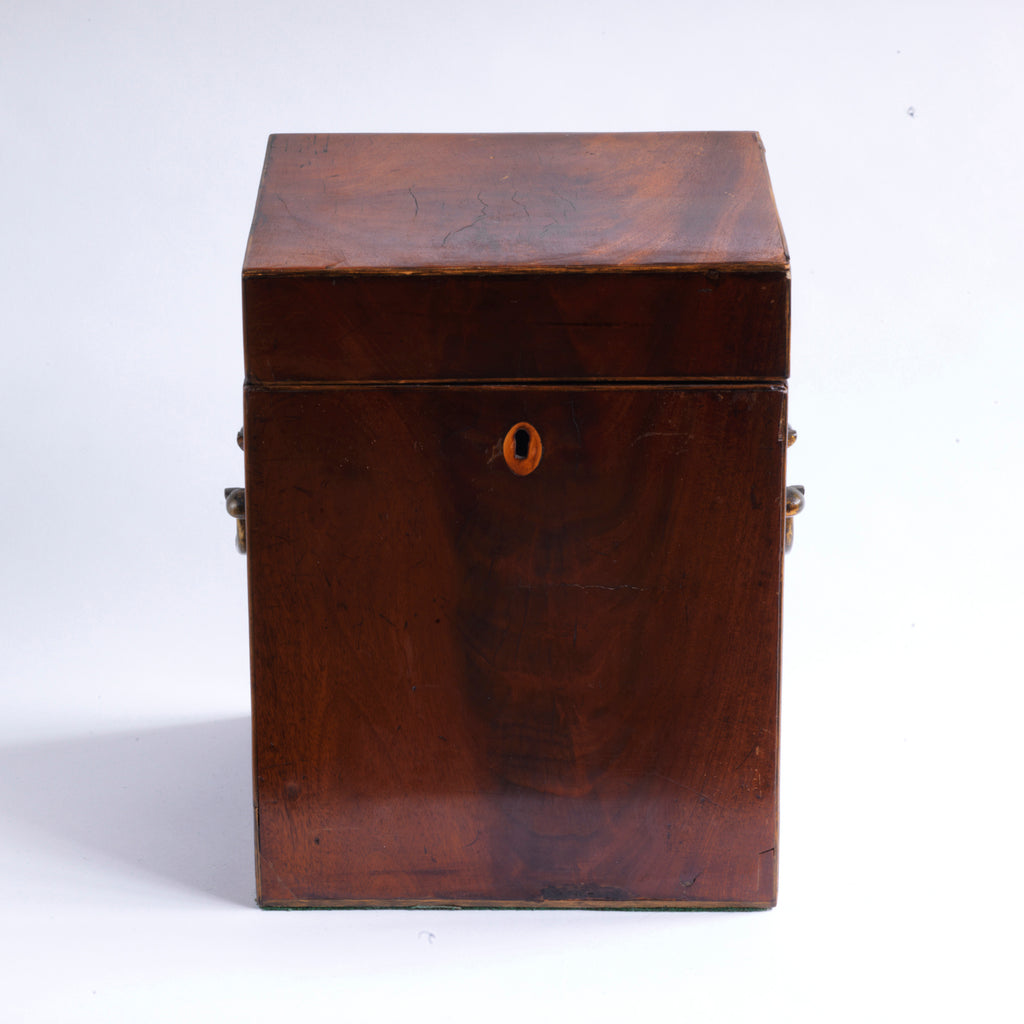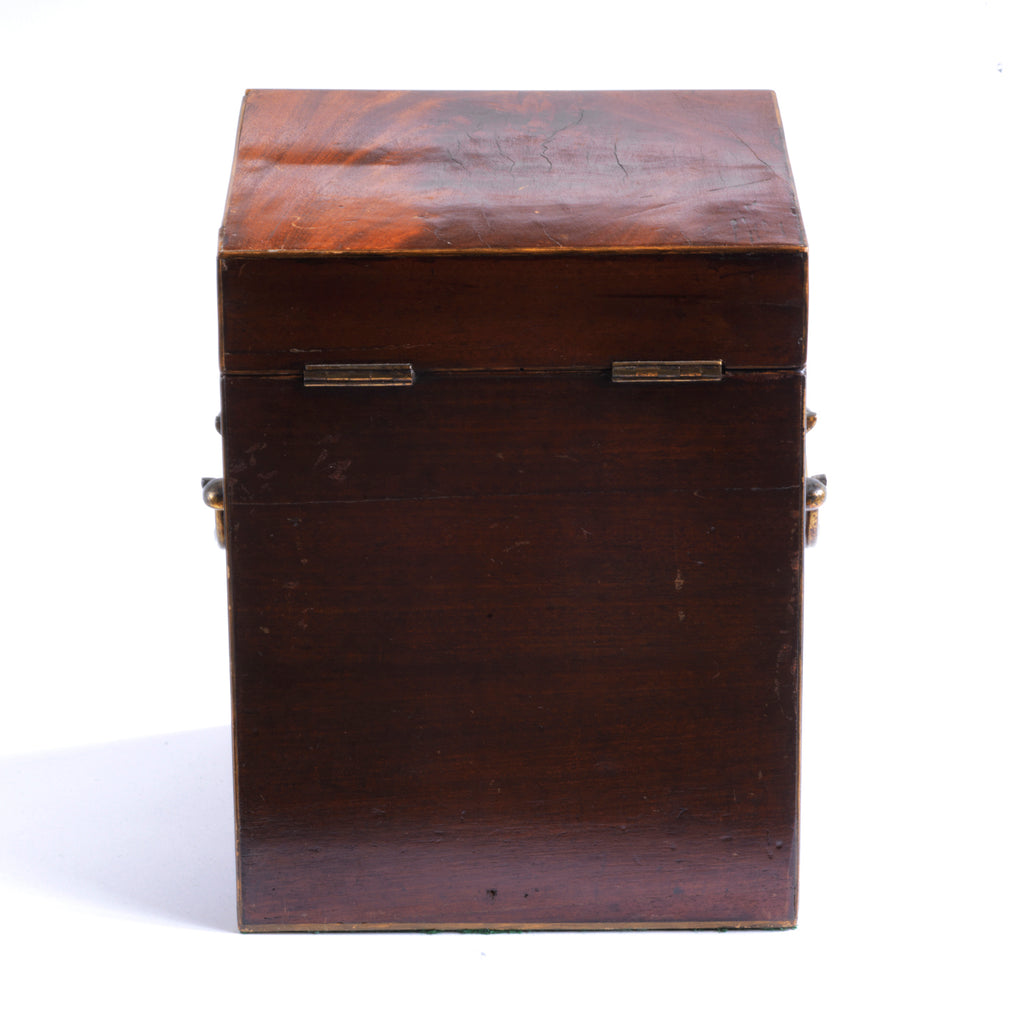VINTAGE
Georgian Butler's Chest
£235.00
A handsome George III mahogany veneered butler's wine chest or cellaret with hinged lid; having veneer strung edges, twin brass carrying handles, felt baize covered underside, and an oval shaped veneer escutcheon. Originally it would have been lined inside and had wooden divisions, diving the inside into four - to house four bottles or decanters. Most likely these were removed a century ago when electric refrigeration started to take hold, and the cellaret was put to better uses. This wine chest can still be used to house bottles or decanters, and of course has a multitude of other uses.
History
Cellarettes, wood box containers, are freestanding alcoholic beverage chests that first appeared in Europe in the fifteenth century to hold and secure bottled alcohol in public houses. Colonial America embraced them in the eighteenth century as a form of European liquor cabinet. Their main purpose, to secure wine and whiskey from theft; as the bottles were hidden in a chest that could be locked. Their heyday was the 18th century and beginning of the 19th century, popularised by cabinet makers George Hepplewhite and Thomas Sheraton, and veneered in exotic woods, such as mahogany, rosewood and walnut.
The Georgians often referred to them as a "mahogany butler for liquors" or a "wine cooler" or a "butler", the latter a reference to the staff person exercising custodial responsibility over the bottles contained in a cellarette. Although chiefly associated with the dining room, they were also designed to carry and transport small numbers of bottles or decanters; hence their strong handles, which also afforded them to be moved from room to room - such as shown on our handsome wine chest here.
Year of manufacture: c.1790
Country of origin: UK
Material: mahogany veneer, base wood and brass
Dimensions: Width 21cm Depth 21cm Height 27cm
Condition: a little battle scarred, with a tiny section of the veneer stringing missing from the top corner edge of the lid. It is missing its internal liner and divisions, and its barrel lock.





